ACID DYES
The name “Acid dye” gives some insight into its chemical composition. As the name implies, acid dyes consist of acidic molecular groups that characterize the compounds. The process of using acid dyes predominantly takes place in water, when the acid dye is dissolved and therefore able to interact with the material being colored. Historically, acid dyes were most commonly used to dye materials consisting of protein fibers. The acidic pH of the dye-bath allows the dye molecules to bond to the protein fibers. Due to the low staining propensity of acid dyes, they are often used in soaps, detergents, and other cleaning products. The products composed of protein fibers that work well with acid dyes range from animal hair, wool, and feathers, to textiles and synthetic nylon.
To simplify the complex chemical composition of acid dyes, they are usually separated into two primary classes or categories: acid-leveling dyes and acid-milling dyes. Acid-leveling dyes allow the dye molecules to move fairly easy through the fibers and therefore produce an even color. However, because the molecules have low affinity, the dyes are not very resistant to washing. Acid-milling molecules are larger than acid-leveling molecules so their color is not as strong but they are much more resistant to washing. While acid-leveling dyes can be combined to create a mixture of shades, acid-milling dyes cannot be combined and can only be used as a single shade solution. A third, more recent class has been called “metal complex acid dye.” While metal complex acid dyes are more resistant to washing and exposure to light than both acid-leveling dyes and acid-milling dyes, they are known to produce softer and less vibrant shades.
While each of these three classes of acid dyes has its benefits, they all are most commonly sold in the form of sodium salts. When dissolved in the water, the dye-bath solution is anionic, meaning that the molecules are negatively charged. As described above, acid dyes are used to color protein fibers and synthetic nylon, which both have cationic, positively charged sites when submerged in the dye-bath. In addition to the ionic bonding, acid dyes can also attach themselves to the material being colored with hydrogen bonds.
Need a Sample
Request a sample below

